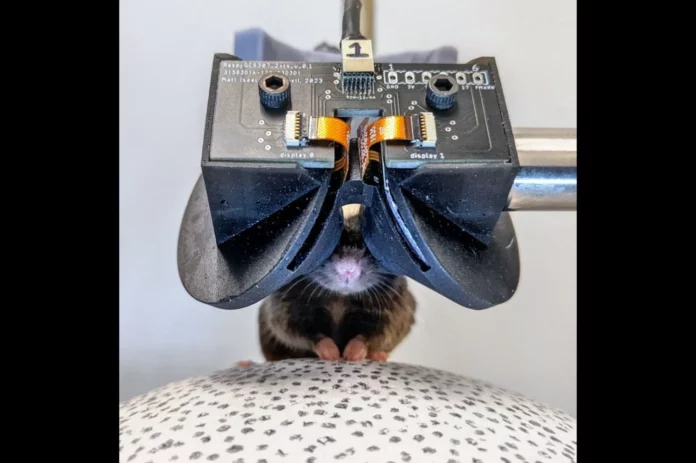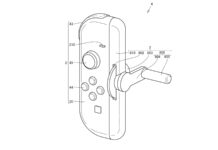Humans are not the only ones who are fascinated by virtual reality. Scientists have just unveiled a new technology that allows mice to experience virtual reality in the lab in a more realistic – and adorable – way.
Researchers from Cornell University developed the technology, which they aptly named MouseGoggles. In experiments with mice, the rodents reacted vigorously to simulated stimuli while wearing the glasses. The innovation should make it easier for scientists to conduct animal research using virtual reality.
As ridiculous as the idea of virtual reality for rodents may sound, it has real-world applications. Ideally, virtual reality could allow scientists to simulate naturalistic environments for mice in a more controlled setting. At the moment, however, the most common setups are rather clumsy: mice are often placed on a treadmill, surrounded by computer or projection screens. However, these screens cannot cover the mouse’s entire field of vision, and it can take a long time for the animals to respond to the virtual reality environment, if they ever do.
The Cornell researchers believe that their MouseGoggles are a significant step forward from standard mouse VR. Instead of trying to create a mini-Oculus Rift from scratch, they built their system using tiny, inexpensive parts borrowed from smartwatches and other existing devices. As with other virtual reality systems, mice are placed on a treadmill to use MouseGoggles. Their heads are fixed in the goggles while they receive visual stimuli.
“It definitely benefited from the hacker ethos, which is to take parts that were created for something else and then apply them to a new context,” lead researcher Matthew Isaacson, a Cornell University graduate student, told the university’s Cornell Chronicle. “As it turns out, the perfect size display for a virtual reality headset with a mouse is already practically created for smartwatches. We were fortunate that we didn’t have to build or design anything from scratch, we could easily find all the inexpensive parts we needed.”
To confirm the viability of their system, the researchers exposed the mice to various stimuli while measuring their brain activity and observing their behavior. After conducting a series of tests, the researchers found that the mice did indeed see and react to virtual reality as expected. For example, in one condition, they tracked the mice’s reaction to a gradually approaching dark spot that could represent a potential predator.
“When we tried to run a similar test in a conventional virtual reality system with large screens, the mice didn’t react at all,” says Isaacson. “But almost every mouse, when they saw it for the first time with the glasses, jumped up. They had a huge startle reaction. They really felt like they were being attacked by an approaching predator.”
The team’s findings were published earlier this month in the journal Nature Methods.
According to the researchers, the development of more realistic virtual reality for mice could have many benefits in the future. Accurate virtual reality experiments could allow scientists to better map and understand the brain activity of mice modeled with Alzheimer’s disease, for example, especially areas related to spatial navigation and memory; it could also improve basic research testing potential treatments for brain disorders.
Issacson and his colleagues are not the only researchers who have recently created virtual reality systems for mice. But they say theirs is the first to include eye and pupil tracking. And they’re already developing a lightweight, mobile virtual reality system that could be used for large rodents like rats or tree shrews. They also hope to include more enhancements in a future iteration, such as finding a way to simulate taste and smell.









